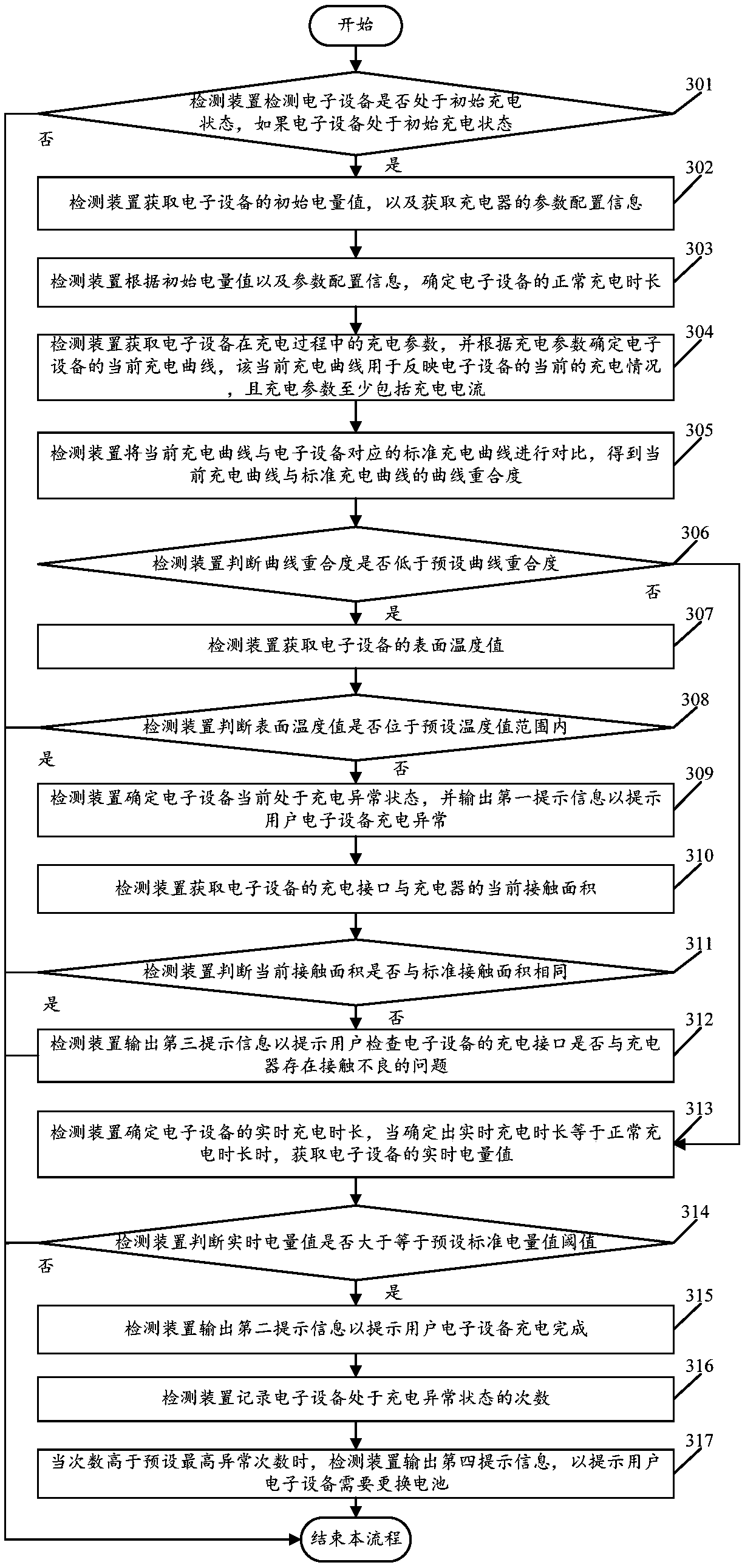Charging abnormity detection method and device of electronic equipment
A technology for electronic equipment and detection devices, which is applied in the direction of measuring devices, measuring electricity, and measuring electrical variables, etc., can solve the problem of affecting the battery life of electronic equipment, affecting the user's experience in using electronic equipment, and making it difficult for users to perceive electronic equipment. Equipment abnormalities and other issues
- Summary
- Abstract
- Description
- Claims
- Application Information
AI Technical Summary
Problems solved by technology
Method used
Image
Examples
Embodiment 1
[0072] see figure 1 , figure 1 It is a schematic flowchart of a method for detecting abnormal charging of an electronic device disclosed in an embodiment of the present invention. Among them, such as figure 1 As shown, the abnormal charging detection method of the electronic device may include the following steps:
[0073] 101. The detection device acquires charging parameters of the electronic device during charging, and determines a current charging curve of the electronic device according to the charging parameters. The current charging curve is used to reflect the current charging situation of the electronic device, and the charging parameters include at least a charging current.
[0074] In the embodiment of the present invention, before the detection device acquires the charging parameters in the charging process of the electronic device, it can also judge whether the electronic device is in use, and when it is judged that the electronic device is in use, it can output...
Embodiment 2
[0091] see figure 2 , figure 2 It is a schematic flowchart of another method for detecting abnormal charging of an electronic device disclosed in an embodiment of the present invention. Among them, such as figure 2 As shown, the abnormal charging detection method of the electronic device may include the following steps:
[0092] 201. The detection device detects whether the electronic device is in the initial charging state. If the electronic device is in the initial charging state, execute step 202; if the electronic device is in the initial charging state, end this process; where the initial charging state is used to indicate the charging interface of the electronic device The initial moment of contact with the charger.
[0093] 202. The detection device acquires the initial power value of the electronic device, and acquires parameter configuration information of the charger.
[0094] In the embodiment of the present invention, the parameter configuration information of...
Embodiment 3
[0112] see image 3 , image 3 It is a schematic flowchart of another method for detecting abnormal charging of an electronic device disclosed in an embodiment of the present invention. Among them, such as image 3 As shown, the abnormal charging detection method of the electronic device may include the following steps:
[0113] In the embodiment of the present invention, the abnormal charging detection method of the electronic device includes steps 301-306. For the description of steps 301-306, please refer to the detailed description of steps 201-206 in Embodiment 2, which will not be repeated in this embodiment of the present invention.
[0114] Wherein, when step 306 judges that the curve coincidence degree is lower than the preset curve coincidence degree, trigger the execution of steps 307-312; when step 306 judges that the curve coincidence degree is not lower than the preset curve coincidence degree, trigger the execution of steps 313-315 .
[0115] 307. The detect...
PUM
 Login to View More
Login to View More Abstract
Description
Claims
Application Information
 Login to View More
Login to View More - R&D
- Intellectual Property
- Life Sciences
- Materials
- Tech Scout
- Unparalleled Data Quality
- Higher Quality Content
- 60% Fewer Hallucinations
Browse by: Latest US Patents, China's latest patents, Technical Efficacy Thesaurus, Application Domain, Technology Topic, Popular Technical Reports.
© 2025 PatSnap. All rights reserved.Legal|Privacy policy|Modern Slavery Act Transparency Statement|Sitemap|About US| Contact US: help@patsnap.com



